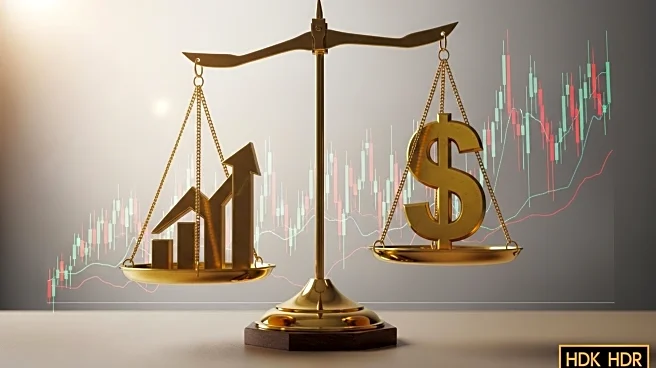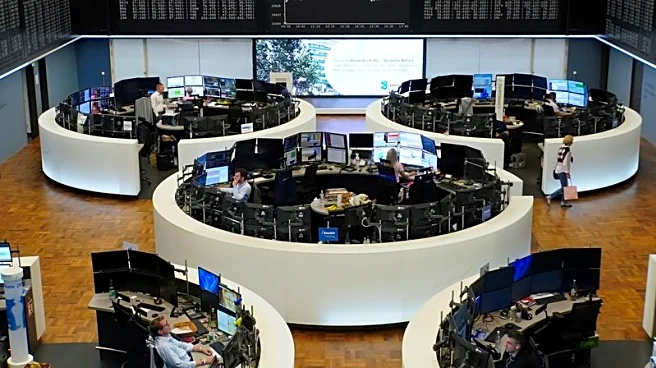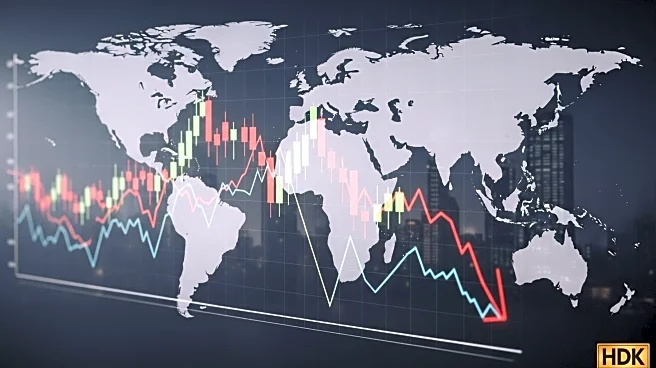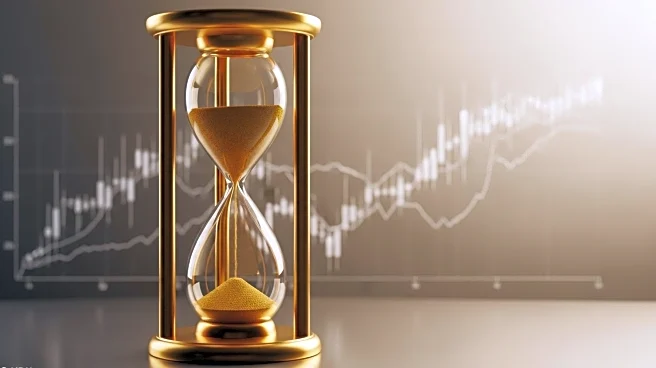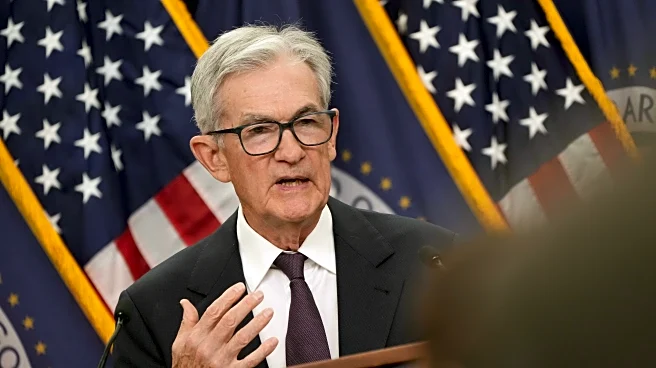What's Happening?
The U.S. Federal Reserve has reduced interest rates by 25 basis points, prompting a rise in gold prices as investors anticipate further rate cuts and face geopolitical uncertainties. Gold, a traditional safe-haven asset, has seen a steady increase, trading near record highs. The market is pricing in additional rate cuts in October and December, with probabilities of 94% and 77%, respectively, according to the CME FedWatch tool. Fed Chair Jerome Powell has emphasized the need to balance inflation concerns with a weakening labor market. The upcoming U.S. Personal Consumption Expenditures index, the Fed's preferred inflation gauge, is expected to provide further insights into potential rate adjustments.
Why It's Important?
The Federal Reserve's decision to cut interest rates is significant as it impacts various economic sectors, including commodities like gold. Lower interest rates typically boost gold prices, as they reduce the opportunity cost of holding non-yielding assets. This move also reflects the Fed's attempt to navigate economic challenges, such as inflation and labor market weaknesses. Investors are closely monitoring geopolitical tensions, which further drive demand for safe-haven assets. The rate cuts could influence borrowing costs, consumer spending, and investment strategies, affecting the broader U.S. economy.
What's Next?
Market participants are awaiting the U.S. Personal Consumption Expenditures index for further cues on the Fed's monetary policy direction. The index's results could influence the likelihood of additional rate cuts. Investors are also keeping an eye on geopolitical developments, particularly NATO's stance on Russia and President Trump's comments on Ukraine. These factors could continue to impact gold prices and market sentiment. The Fed's future decisions will be crucial in shaping economic conditions and investor strategies.
Beyond the Headlines
The Federal Reserve's rate cuts highlight ongoing debates about its independence and the balance between economic growth and inflation control. The geopolitical tensions add complexity to the economic landscape, influencing investor behavior and market dynamics. The situation underscores the interconnectedness of global events and their impact on domestic economic policies.



